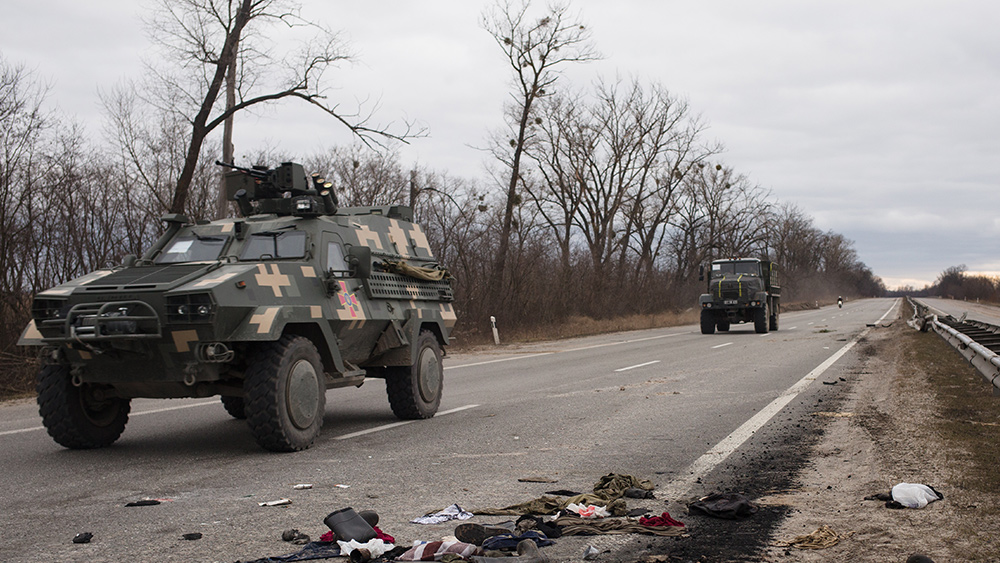While Ukraine has become a nuclear powder keg that could blow-up the world through miscalculation, it's also become a disaster for US superpower credibility under Joe Biden
“It is much safer to be feared than loved.” --Machiavelli (1532)
President Biden staked U.S. and allied credibility on his Ukraine policy—and lost. The U.S. “drew a line in the sand” over Ukraine that has been crossed by Russian tanks.
(Article by Dr. Peter Vincent Pry republished from
AllNewsPipeline.com)
No matter how costly to Russia its invasion may prove, Ukraine is a disaster for U.S. superpower credibility.
President Biden’s policy opposing Russian tanks with economic sanctions, and sending arms to support a fight to the death by the last brave Ukrainians, makes the U.S. look craven and weak before the entire world, the agony of Ukraine and U.S. failure a daily feature of global television.
Less than a week into the invasion, maybe to cover Biden’s weakness or maybe from ignorance, the media are already claiming Russia is “bogged down” in Ukraine, a nation the size of France (Nazi Germany’s “lightning war” conquering France in 1940 took 45 days).
Russia does not want to destroy Ukraine, but to incorporate it into the Russian Empire.
Russia is probably trying to defeat Ukraine while limiting damage to cities, critical infrastructures, and the population by battling the Ukrainian Army in the countryside, trying to exhaust their material capabilities to fight. Inevitably, there will be damage to cities and infrastructure, like the still unknown scale of damage caused by fighting for control of Ukraine’s largest nuclear reactor.
Even if Russia is defeated by Ukraine, which still seems unlikely, the U.S. will lose the superpower credibility war.
President Biden’s response to aggression, levying economic sanctions (that have never deterred Russia, China, North Korea, or Iran) while “the little guy” fights for survival, looks like cowardice, while dictator Vladimir Putin is willing to invade, willing to risk nuclear war.
Now allegedly in response to U.S. threats, Russia’s nuclear forces are on “high alert.” Ukraine is a nuclear powder keg that could too easily blow-up the world through miscalculation.
The White House has not reciprocated by raising the readiness of U.S. STRATCOM, risking a nuclear Pearl Harbor. It did not have to be this way.
President Biden could have been a peacemaker, used the Ukraine crisis as an opportunity to reset relations with Russia, instead of becoming the chief “chicken hawk” in a war that serves no vital U.S. national interests.
NATO initially fractured politically over Ukraine, but allegedly has rallied against the Russian threat with bold talk from Germany and others about ending “Ostpolitik” appeasement, increasing defense spending, and stopping imports of Russian natural gas and oil, that fuel Europe’s economies.
But in the long-run, and maybe even in the short-run, it is highly unlikely the socialist-democrat governments of European NATO will overcome their addictions to Russian gas and oil, to welfare spending, and to pacifism and appeasement.
Indeed, President Biden’s leading NATO into a nuclear confrontation with Russia over Ukraine, in the aftermath of the crisis when passions cool, is likely to result in a weaker NATO, perhaps an alliance in name only.
The Ukraine crisis, to those who pay attention to the balance of military power, has starkly highlighted that European NATO is not a real military bastion against Russian aggression, become so weak Europe’s security depends chiefly on U.S. nuclear deterrence.
Yet President Biden’s fear or somnambulism in the face of very real Russian nuclear threats must undermine confidence in the U.S. “nuclear umbrella”:
--Shortly before invading Ukraine, Russia mobilized Yars ICBMs that can strike both the U.S. and Europe. (Yars violates the Intermediate-Range Nuclear Forces Treaty and is one of the reasons the U.S. withdrew from the INF Treaty.)
--Just before invading Ukraine, Russia performed a major nuclear forces “exercise” called Grom (Thunder), unusually, conducted off the coast of Northern Europe, simulating nuclear strikes in the Arctic Ocean near Finland, Sweden, and Norway, too close for comfort.
--After invading Ukraine, on Sunday February 27, Vladimir Putin relocated to one of his nuclear command bunkers (some of these are hundreds of meters underground, tunneled in solid granite, with accommodations for thousands of Russian elites, and impervious to nuclear strikes).
Read more at:
AllNewsPipeline.com












